Keenness to experiment, old and new techniques, references to environmental issues: this year’s special show of young talents at the “Crafts & Design” exhibition would have been multifaceted as rarely ever before, and the boundaries between art, design and craft are fluid.
In 2020, the special “Talente” show at Munich’s “Crafts & Design” exhibition showcases the works created by 99 young designers or teams from 30 nations, and working in 14 crafts. There are particularly innovative creations in the glass, ceramics and jewelry genres, and a large number of interesting textiles are also on display. The submissions testify to the fact that climate change, sustainability and upcycling are major contemporary themes. Rose Ekwe, for example, showcases her textiles made of hemp and algae, Idalene Rapp and Natascha Unger crafted furniture from basalt fibers, Yann Santerre used sediment depositions to create trays and cheerfully colored surfaces, and Sophie Katharina Stanitzek made brush handles from algae. The textile section of the Talente show also spotlights projects involving repaired clothes and environment-friendly towels, as well as requiring the development of products that are functional and have a long useful lifetime. Niklas Böll demonstrates how simple techniques can be used to create fascinating effects, e.g. ornaments by moistening wood.

Alla Ozhegova, Russian Federation, brooch from the C0NF1DENT1AL series. Copper wire, threads, steel, 6,5×6,5×3 cm.

Jiyoung Jang, South Korea, brooch from the Bud series. Sterling silver, copper, porcelain, 3 x 12 x 4 cm. Photo Kwangchoon Park.

Amelia Rosenberg, USA, wall work Half Acre. Stoneware, sgraffito, 78 x 155 x 20 cm. Photo Julia Hartmann.
The question about the value of individual materials has been explored by creating trompe-l’œil effects. Nari Haase has combined differently dyed wool in her rug, thus visualizing its complex materiality. With her “2841” series of vases, Tereza Hruskova illustrates artisanal production processes that are threatened with replacement by mass production. Ayaka Terajima’s ceramic object references consumerism and convenience, which result in huge amounts of non-degradable packaging waste.
Another theme is the combination of new digital technologies and traditional craftsmanship. Maurice Riegler and Lennard Wilde intentionally play with the perfection of digital production, which could not be achieved using traditional tools. At the same time, however, they question the increasing mechanization of everyday life. They used ceramics and jewelry as their mediums to explore our inner conflict of perceiving the mechanization and digitalization of our everyday lives as both threat and facilitation. Stefan Holzmair translated the ambivalence between the discomfort and pleasure in designing into his ceramic objects. Some jewelry creations, such as Alla Ozhegova’s, are themed around digital monitoring.
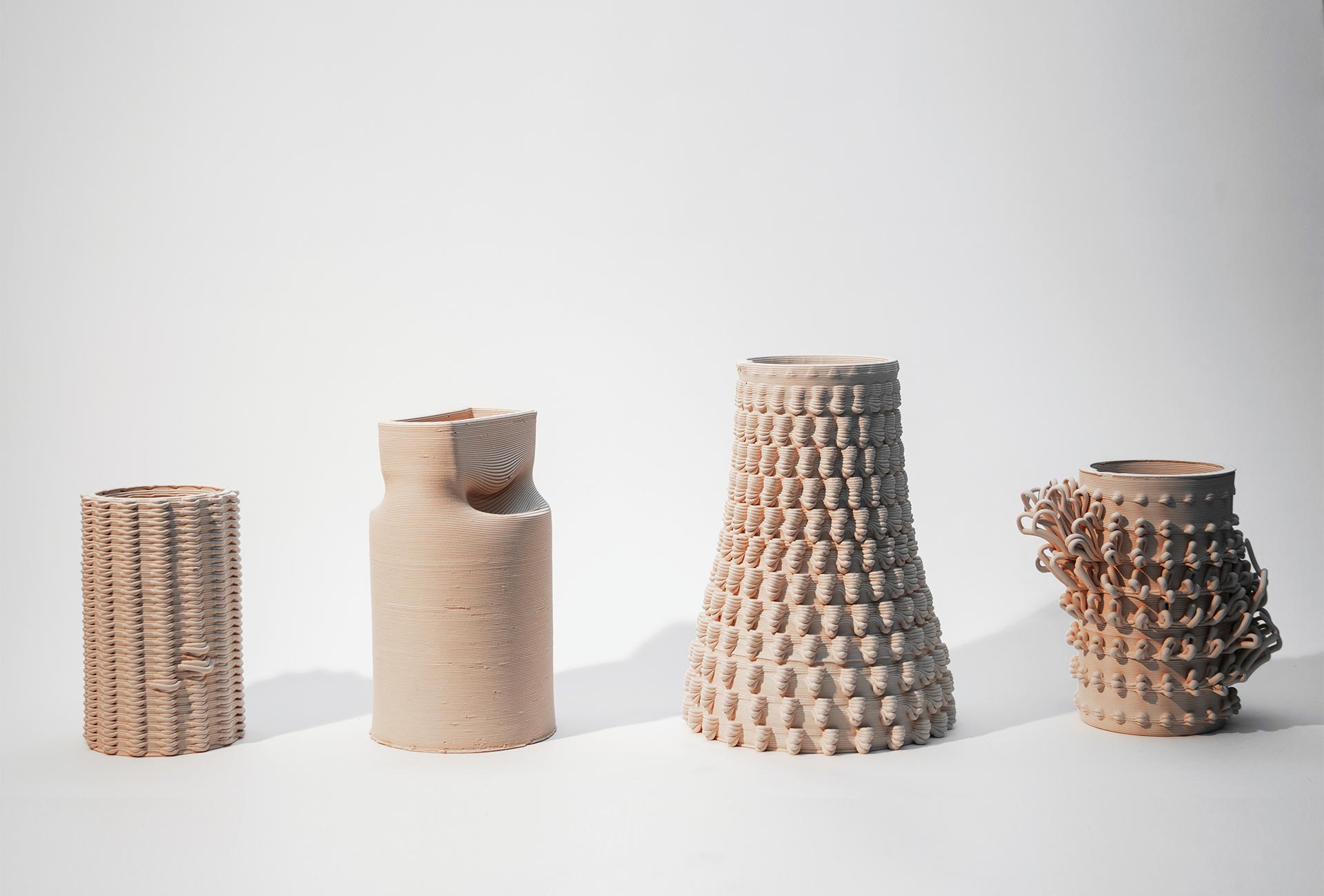
Maurice Riegler and Lennard Wilde, Germany, ceramic objects. Stoneware, 3D printing. Photo Maurice Riegler.

Stefan Holzmair, Germany, object. Ceramic, 57 x 48 x 18 cm. Photo Manuel Eichelberger.
Other themes include contemporary political issues such as Brexit, which Jordan Furze explored, and nationalist movements, which have been creatively reified in jewelry and textiles featuring a critical or ironic use of symbols of political responsibility or a national flag. Kristina Neumann’s jewelry also reflects her critical view of the living conditions in cities, where costs have increased so much that it’s almost impossible for young or less well-off people to find housing. Amelia Rosenberg’s wall piece is the result of her in-depth involvement with the history of her own family during Nazi Germany in the 1930s and 1940s.
Several exhibits are themed around the past and tradition of individual crafts, or have been inspired by nature. Drawing on the past serves as a source of inspiration and experimentation to develop one’s own artistic position. The transmogrification of impressions from the natural world into tangible reality, as exemplified by Shuoyuan Bai’s brooch, is supposed to heighten our awareness of everyday sensory stimuli, and to be conducive to our winding down a bit. This inspiration by nature can also be very specific, as was the case with Carolin Ott, who collected plants for a herbarium, and wrote literary descriptions.

Yann Santerre, France, samples from the Gwilen project. Marine sediments. Photo Stéfan Tulépo.
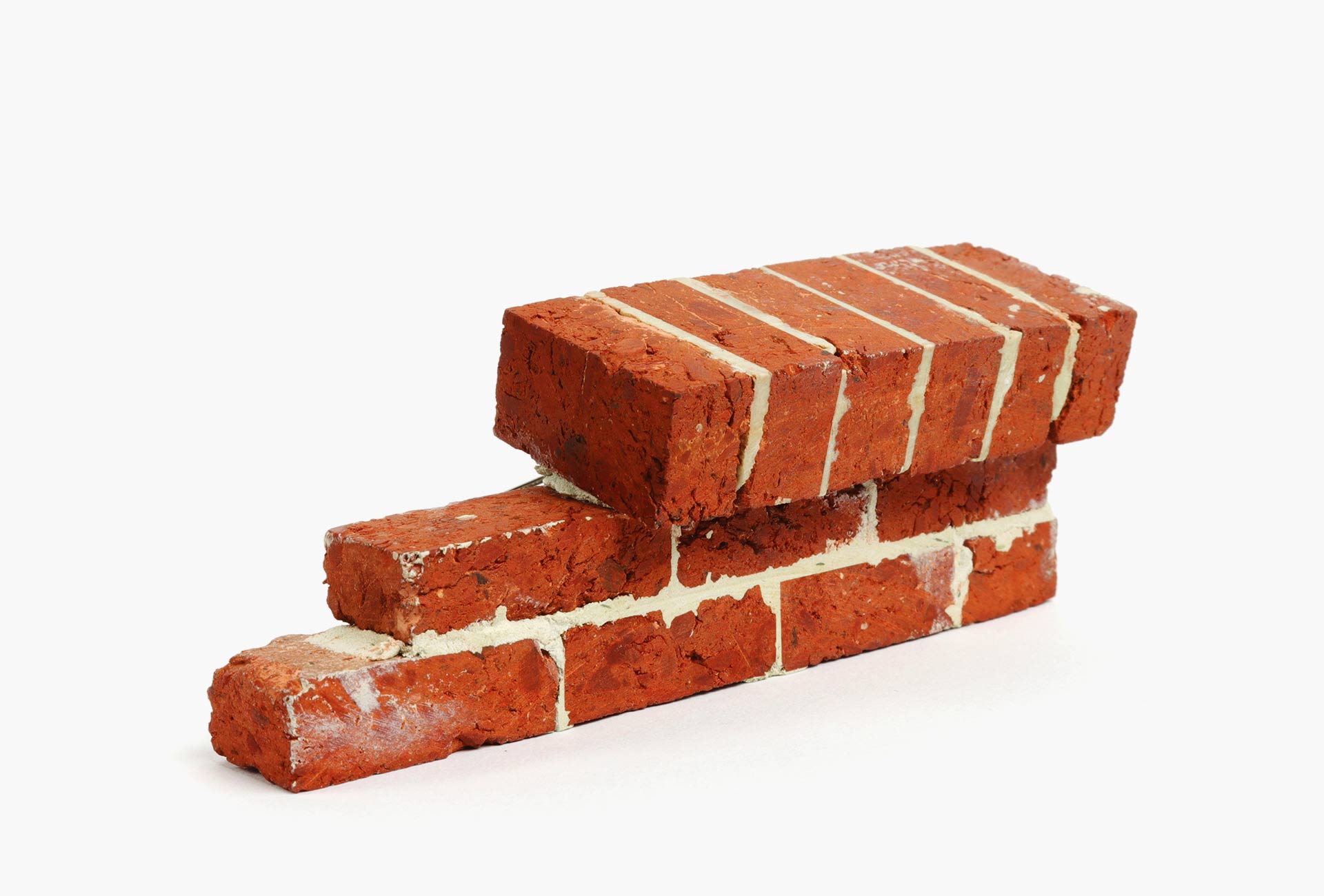
Kristina Neumann, Australia, Sill brooch. Red bricks made of Canberra, polymer clay, 925 silver, stainless steel, adhesive, 2.9 x 8.5 x 3 cm. Photo Simon Cottrell.
As in the past few years, a very large number of applications were for the jewelry genre. The organizers’ selection aims to highlight the different positions and approaches involved. The exhibits have been crafted from a multitude of different materials, and not only reflect personal concerns related to life seen from different angles and to individuality, but also inspire associations, as well as reflection upon the transience of all being and the nature of reality. In addition to exploring the “classic” jewelry theme – the relation between jewelry and its wearer’s body and its reference to emotions –, the artists have also engaged in a dialog with the materials and, like Jiyoung Jang und Xihan Zhai, for example, encourage the beholder to heighten their awareness of the beauty of their natural surroundings.
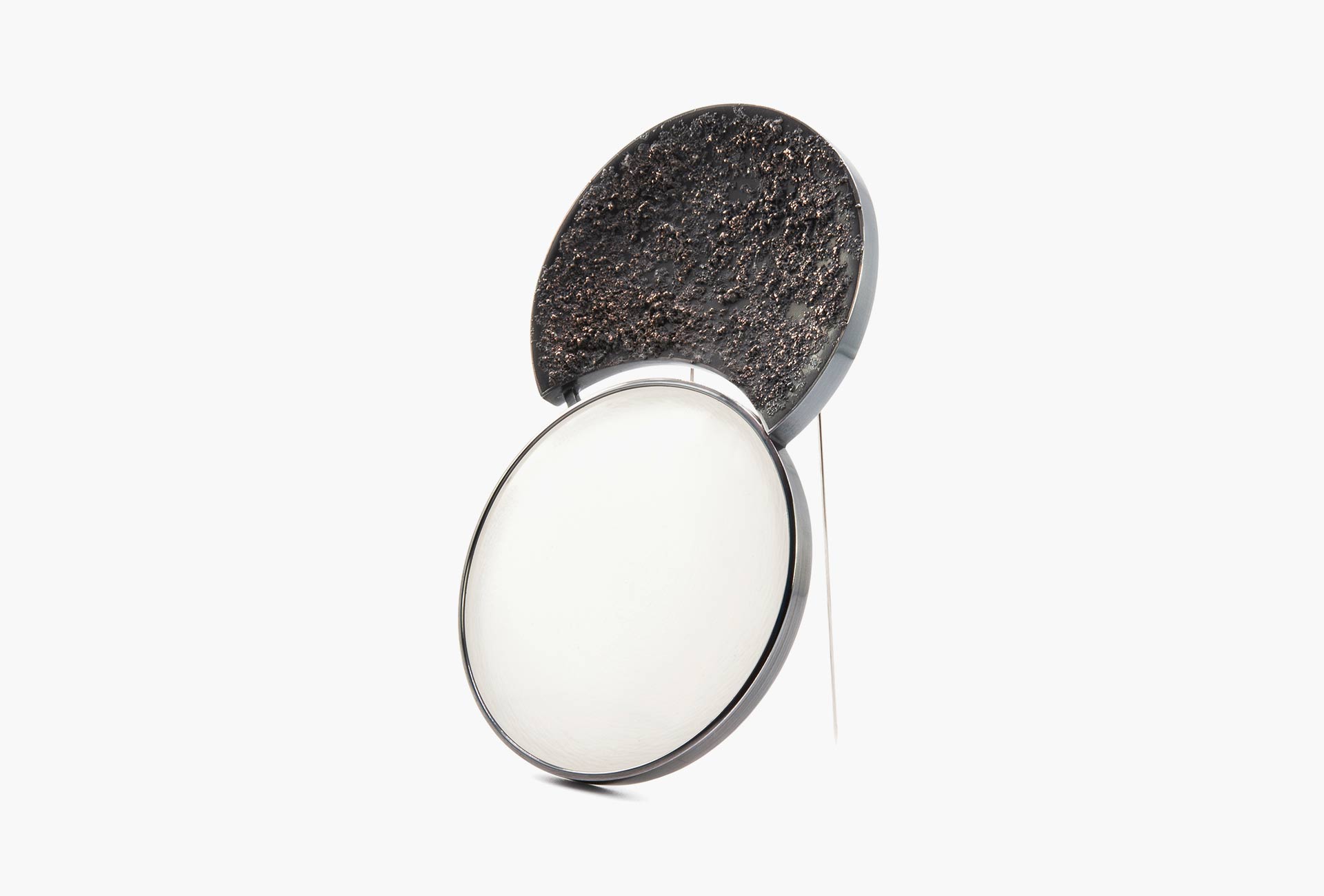
Shuoyuan Bai, China/United States, brooch. Acrylic, copper, sterling silver, stainless steel, color, 12 x 7 x 1 cm. Photo Shuoyuan Bai.
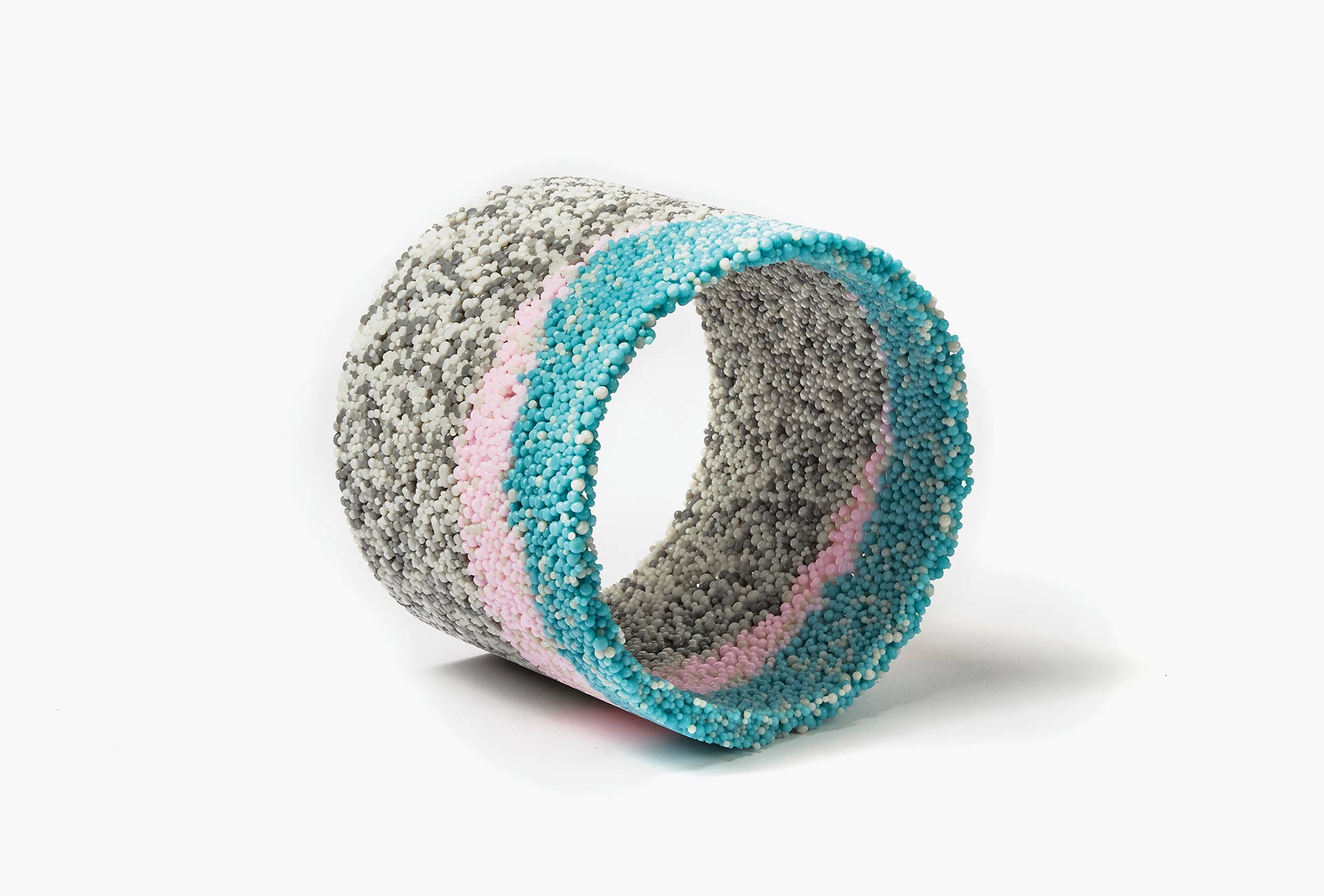
Joshua Kerley, Great Britain, object Sinter IV, 2019. Glass beads, fused in the form, 20 x 20 x 17 cm. Photo Blick Cotterill.
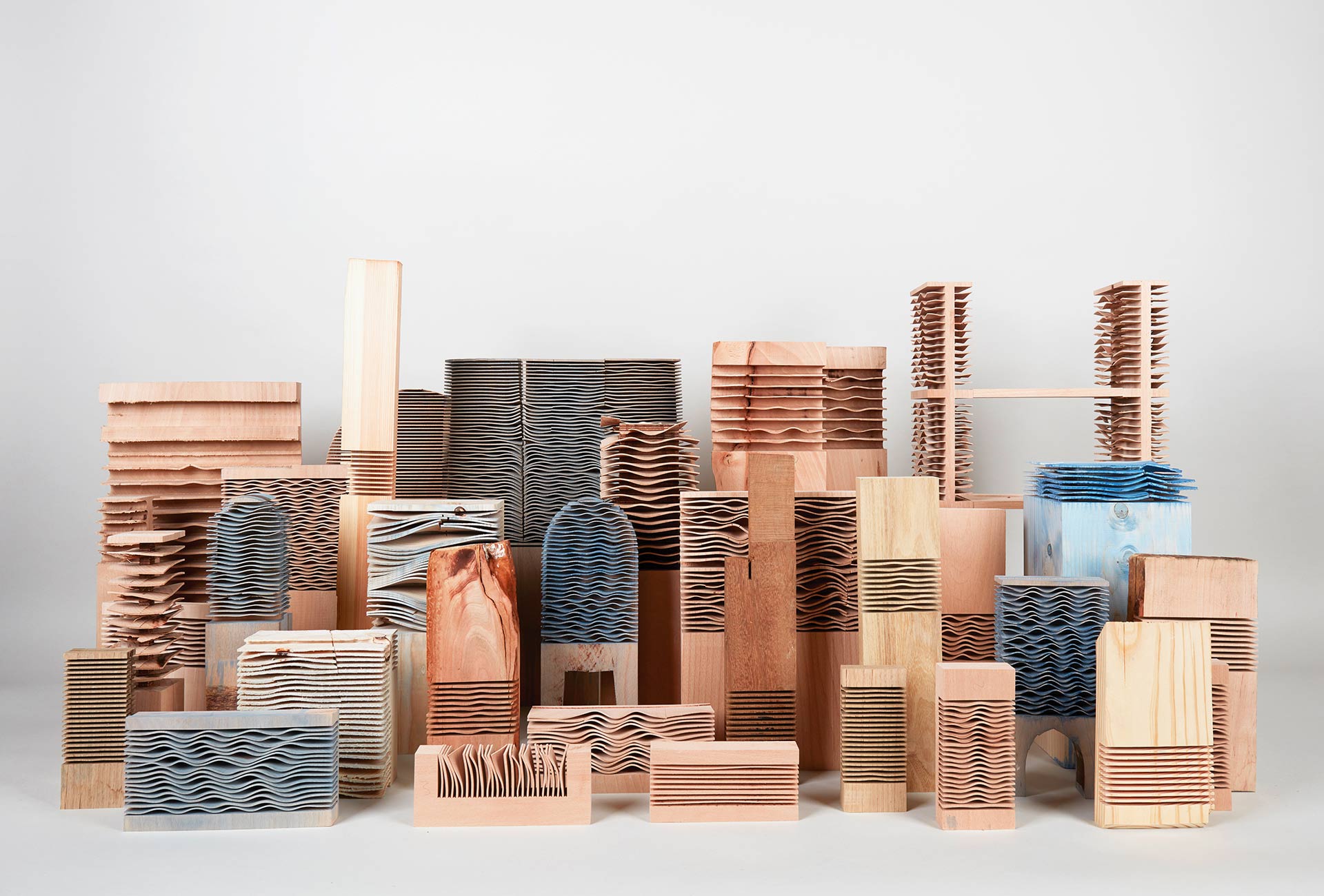
Niklas Böll, Germany, objects from the Wood and Water project. Wood, treated with water, pigments, 60 x 100 x 100 cm. Photo Annika Burmester.

Shioka Okamoto, Japan, fabric sample from the Sensory Pleasure series. Polyester, emulsion paint, 110 x 50 cm.
All in all, young artists now seem less concerned with individual or personal problems, but use their artistic creativity to give expression to socio-political and other concerns, such as those related to climate protection and the natural environment, and to explore and experiment with manufacturing techniques and the opportunities offered by various materials. The “Talente Awards” will be conferred by a jury of international experts on the stage in Hall B1 on 14 March 2020.
Text: Michaela Braesel
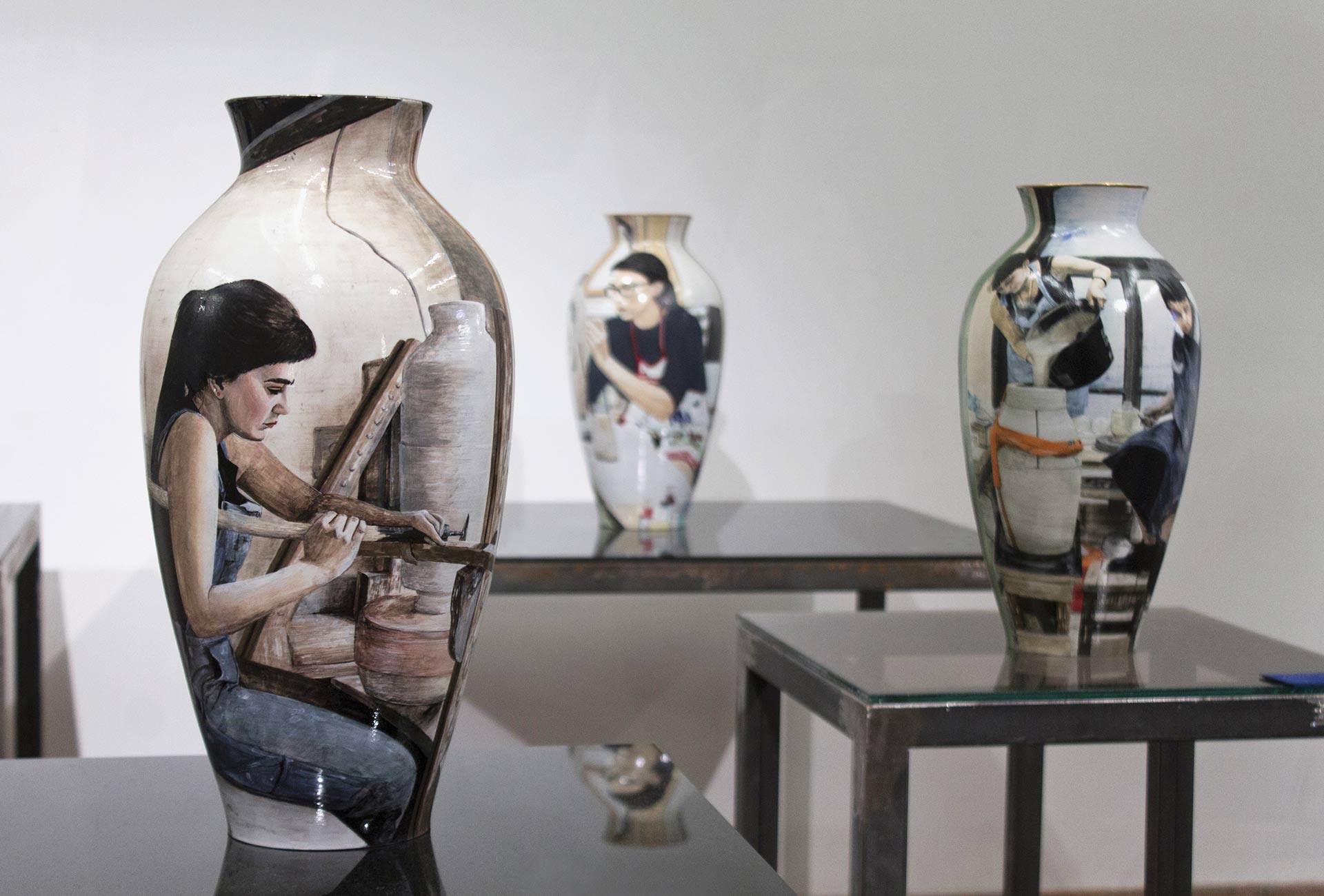
Tereza Hruskova, Czech Republic, vase series 2841 (selfie vase). French porcelain, underglaze painting with overglaze motifs. Each 48 x 25 x 25 cm. Photo Monika Martykanova.

Catherine Sanke, Germany, installation In Nacht und Eis [In night and ice]. Porcelain postcards, wood, paper, drawing and painting, 12,5 x 8,5 x 0,4 cm each. Photo Alexander Burzik.

Nari Haase, Germany, carpet design from the Re-stack! series. Econyl 2, wool., 28 x 36 x 1,2 cm. Photo Alexander Dalbert.